In his Italian Journey, Goethe writes:
“We lunched at Torre Annunziata at a table on the beach. Everyone was happy to live in that place, some maintained that without a sea view it would be impossible to survive.”
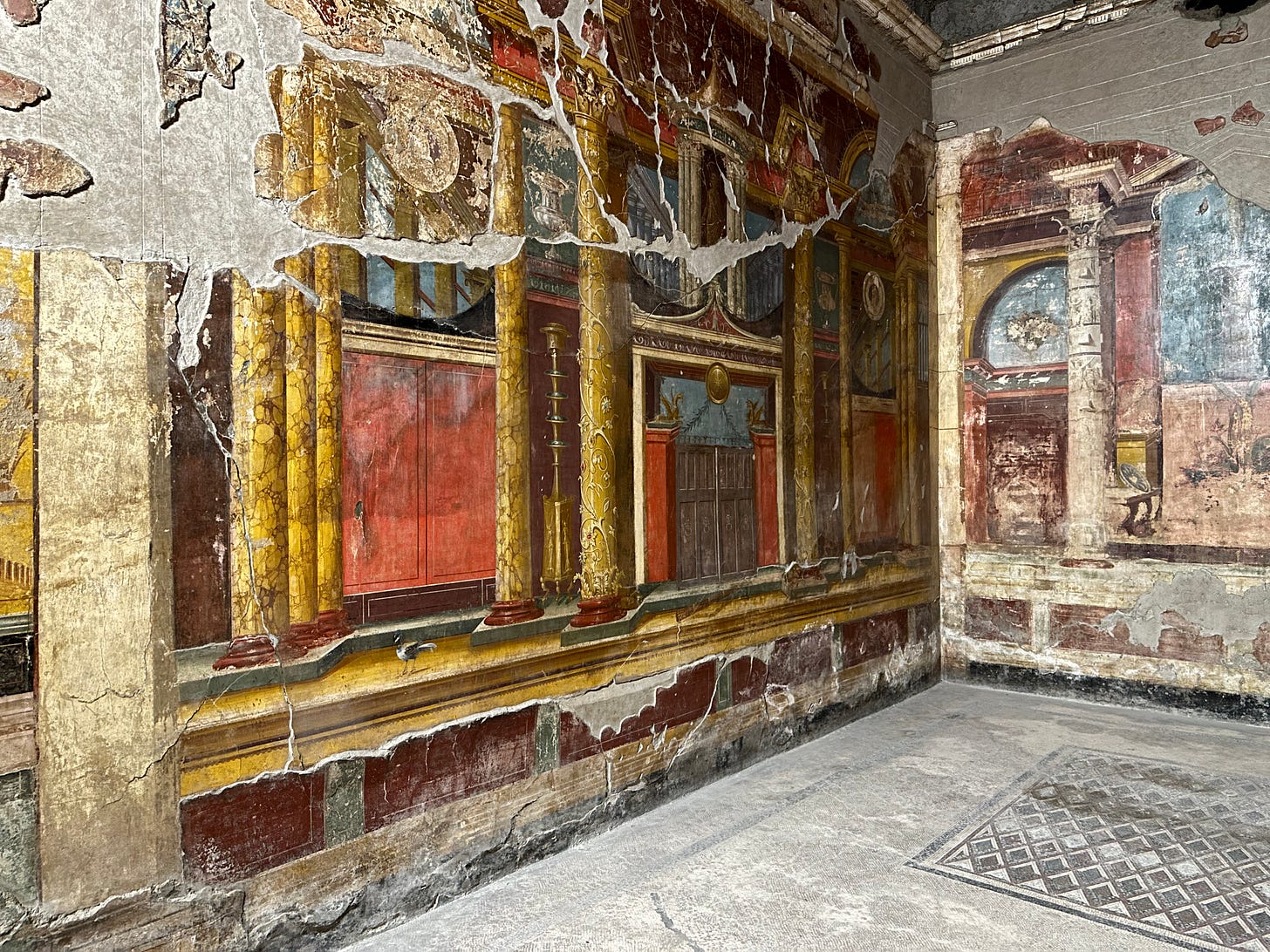
A modern visitor to Torre Annunziata, perhaps arriving by the Circumvesuviana—the local railway which trundles its way through the Neapolitan hinterland—would do well, as current parlance has it, to “manage expectations”. Where Goethe found an idyllic fishing village, today Torre Annunziata is a dense maelstrom of blocks of flats in grubby concrete, long-empty shops with sad dusty windows, and broken paving.
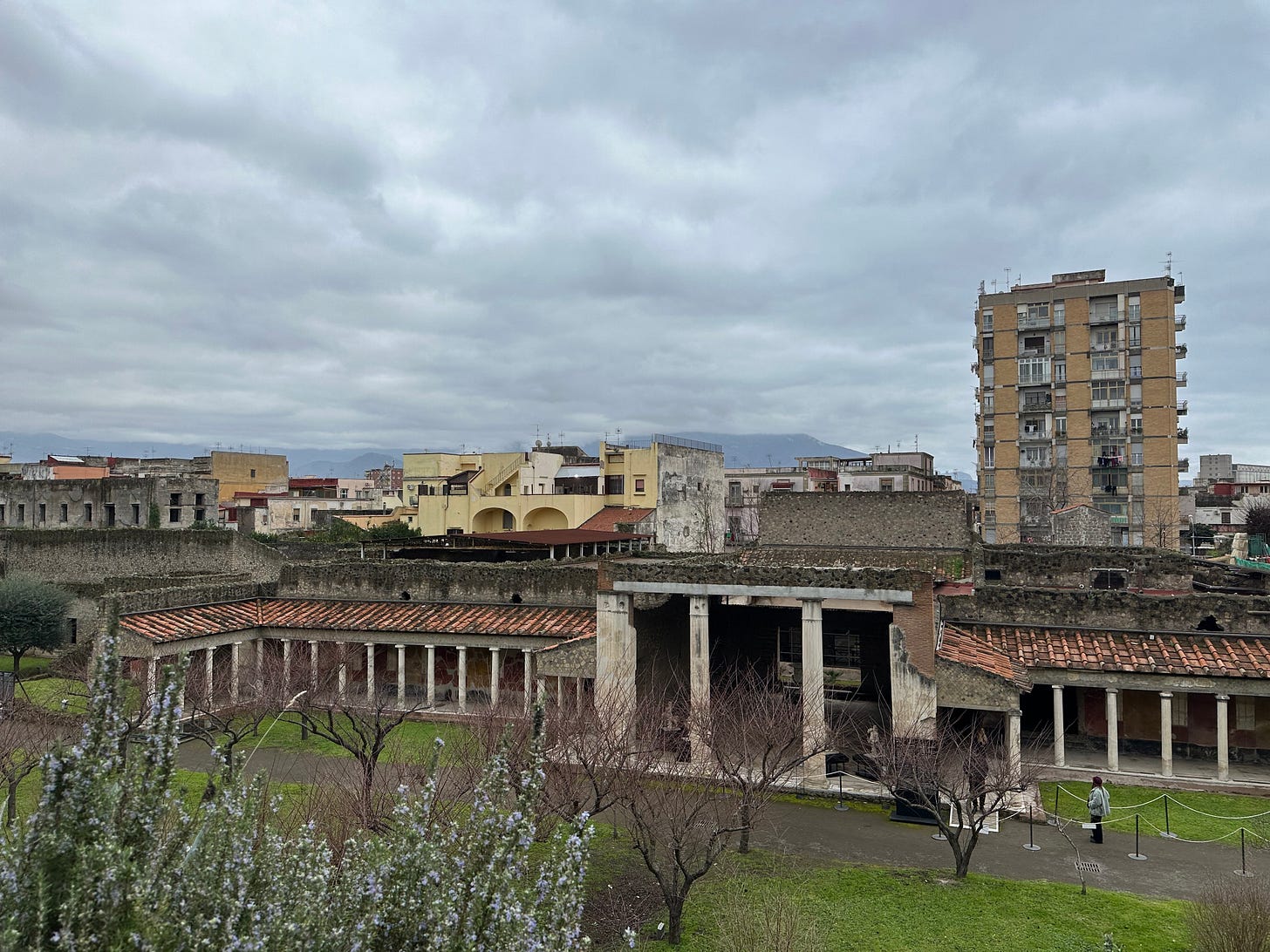
But there is still sunshine and the sea, which go a long way to stave off bleakness. And it is home to one of the most extraordinary Roman villas I’ve ever seen. And I’ve seen a lot of Roman villas.
Long before the Circumvesuviana and the scrappy ad hoc building boom of post-war Torre Annunziata, and long before Goethe marvelled at his bucolic idyll, this was part of the sprawling ancient town of Oplontis. Oplontis was one of many areas of the Bay of Naples occupied by the grand seaside villas of the top brass of Roman society.
One of these is known as the Villa Poppea, and is part of the UNESCO World Heritage Site of the Archeological Areas of Pompei, Herculaneum, and Torre Annunziata. The existence of a grand villa was first identified at the end of the sixteenth century during the excavations by Domenico Fontana for the building of an aqueduct to feed the flour mills of Torre Annunziata (the same excavations also discovered Pompeii, in both cases no further investigation was then undertaken).
In the eighteenth century investigations—more looting than archeology—uncovered extravagant objects but were ultimately thwarted by noxious gases. Local building work in the nineteenth and early twentieth centuries stumbled upon further glimpses of an extraordinary site but it was only after much local pressure that the first serious investigation of the site began in the late 1960s. It identified and excavated part of a villa so opulent in scale and decoration that it has been suggested to have been the property of the family of Poppea, the second wife of Nero.
Partly reconstructed and rebuilt following damage caused by the earthquake of 62 CE it is a glorious expression of opulent and spanking brand new up-to-the-minute Roman fresco decoration of the period.
The quality and scale of the paintings is mind-boggling: if the finest villa decorations from Pompeii and Herculaneum show us the decor of the haut bourgeoisie, this is on an altogether different level. In situ, these splendid frescoes combine with a sense of space which gives a real idea of the juxtaposition of the interior and exterior in the Roman villa. It tells of the way these rooms and courtyards worked as a whole, a fluid progression from light into shade and back again, of internal gardens glimpsed through windows and columns, in a way that no study of architectural plans can ever render.
The multiple courtyards of the villa, just over half of which has been excavated, were laid out on terraces looking out across the Bay of Naples.
Cool colonnades and fountains once amplified the sea breezes as the masters of the universe banqueted on seafood and gazed out across the glittering bay feeling, we can imagine, very pleased with themselves indeed. As they enjoyed the fruits of Empire they were presumably happily oblivious to the rumblings beginning deep down in the mountain which loomed, menacingly, behind them.




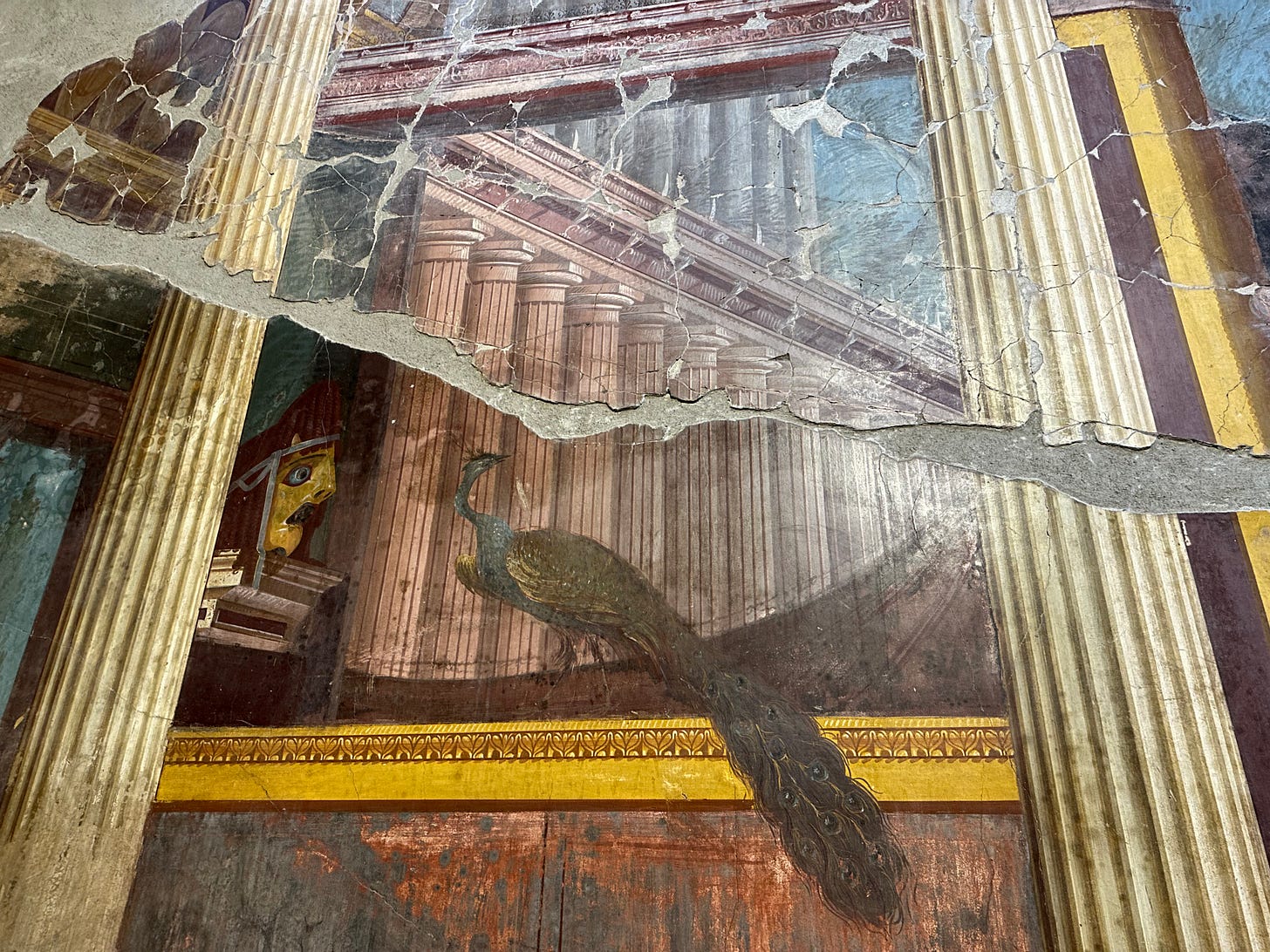
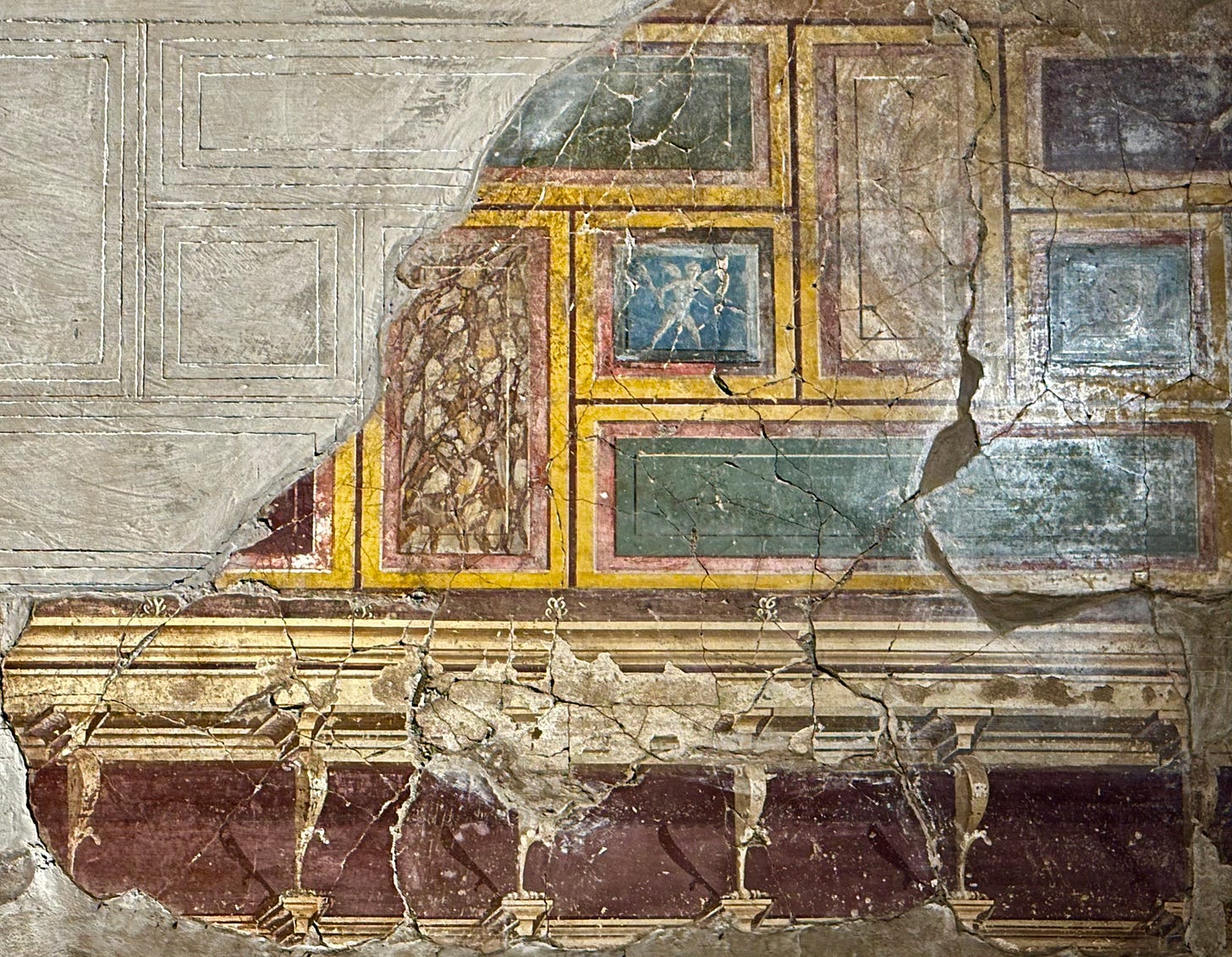
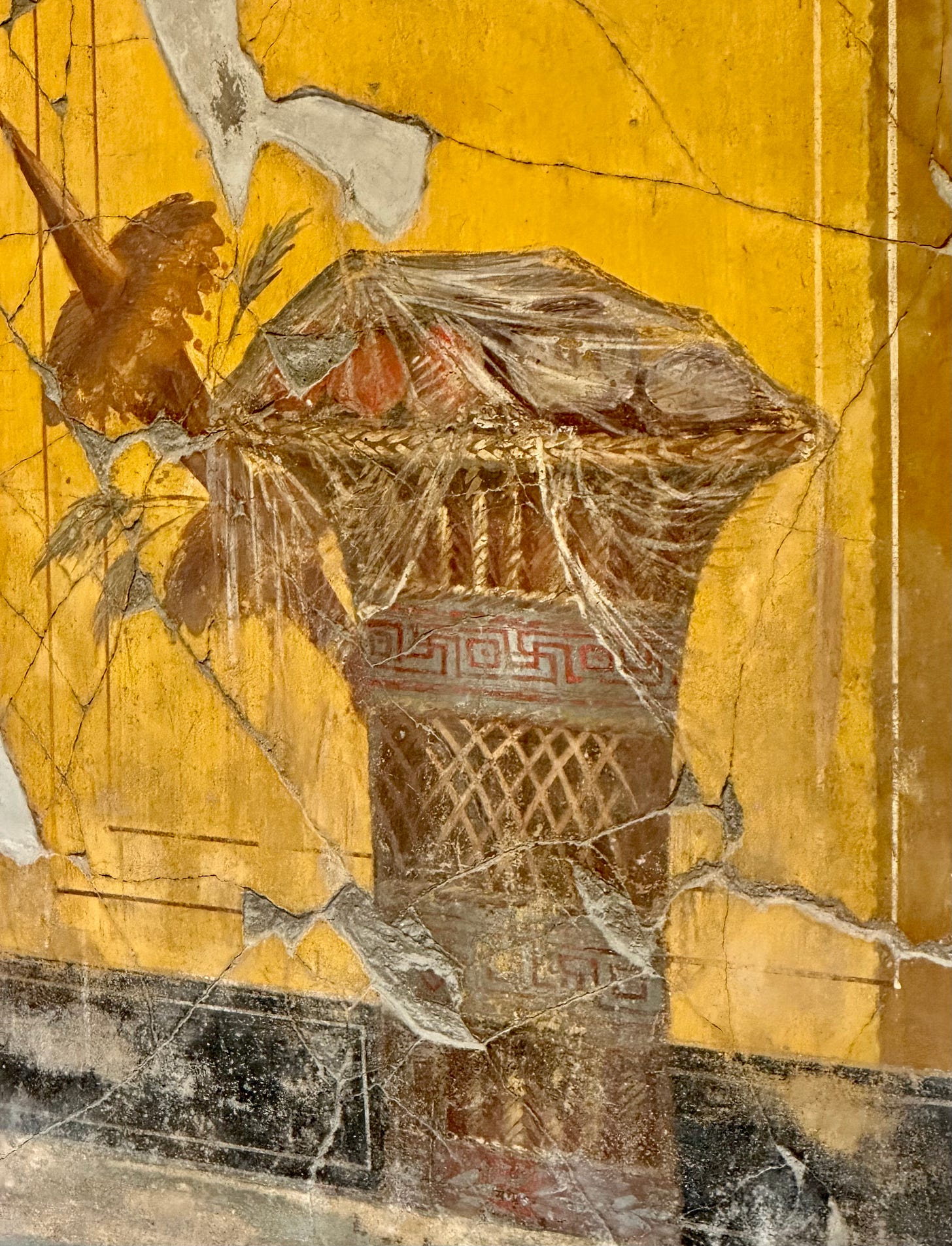
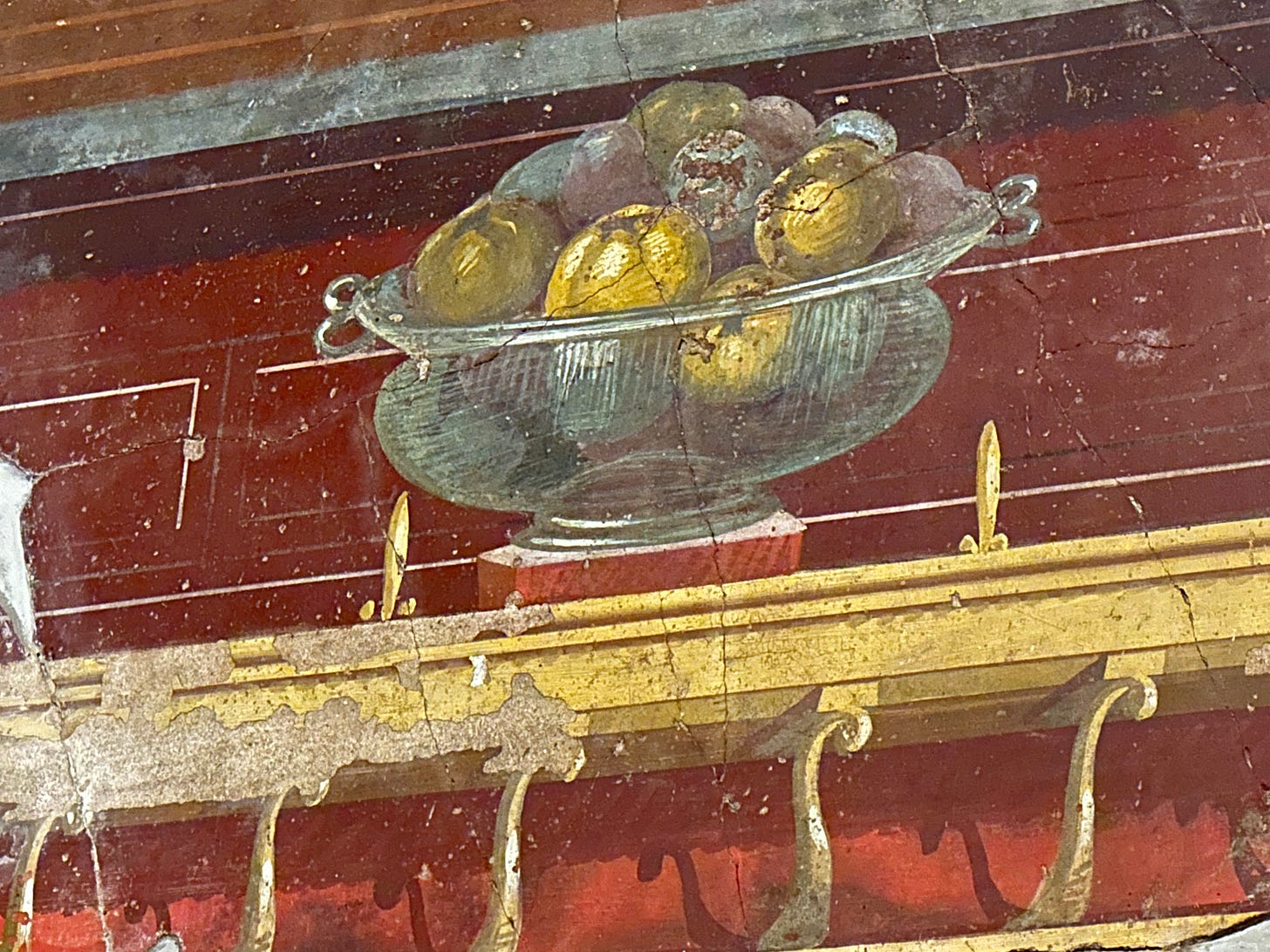
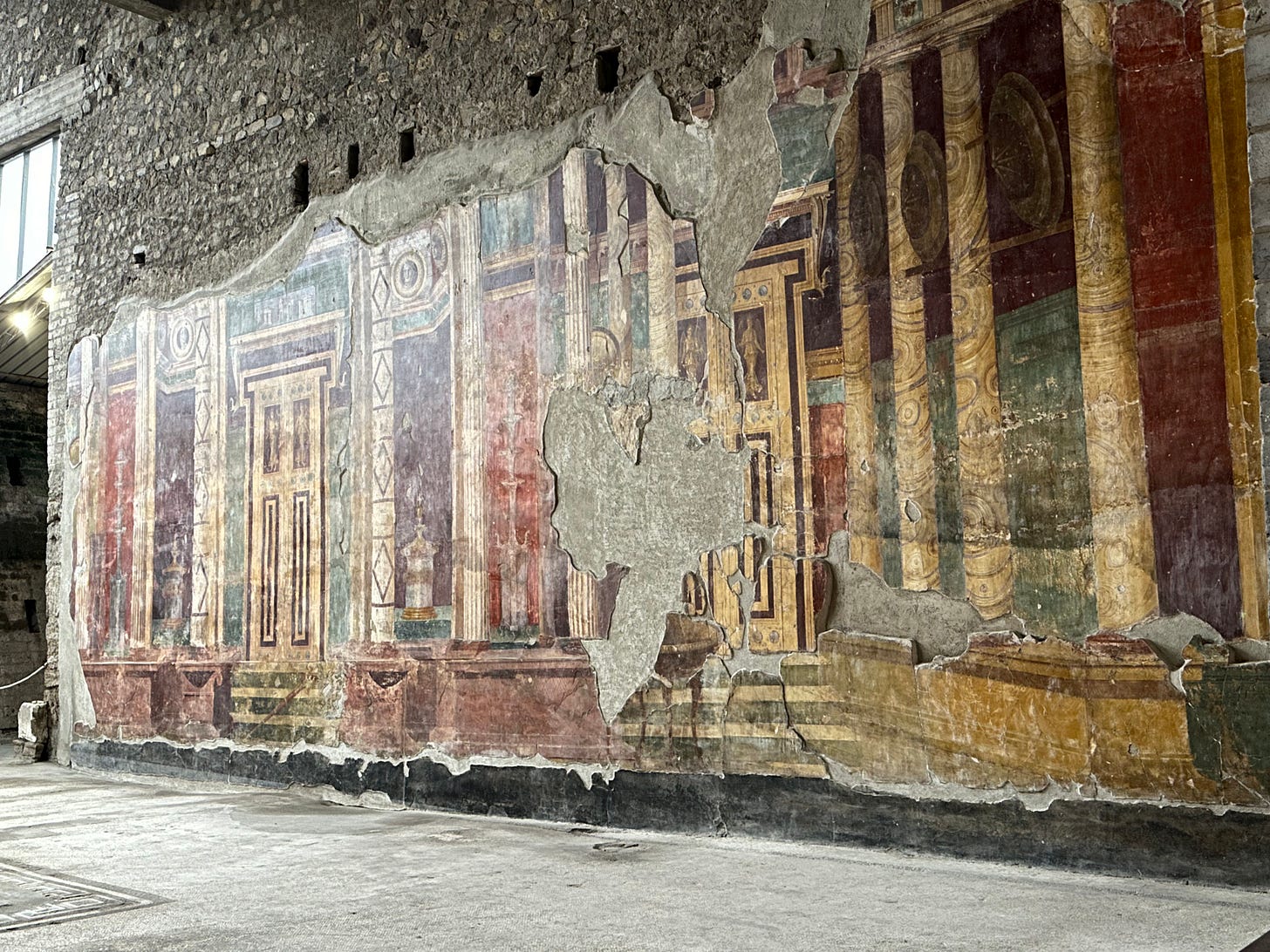
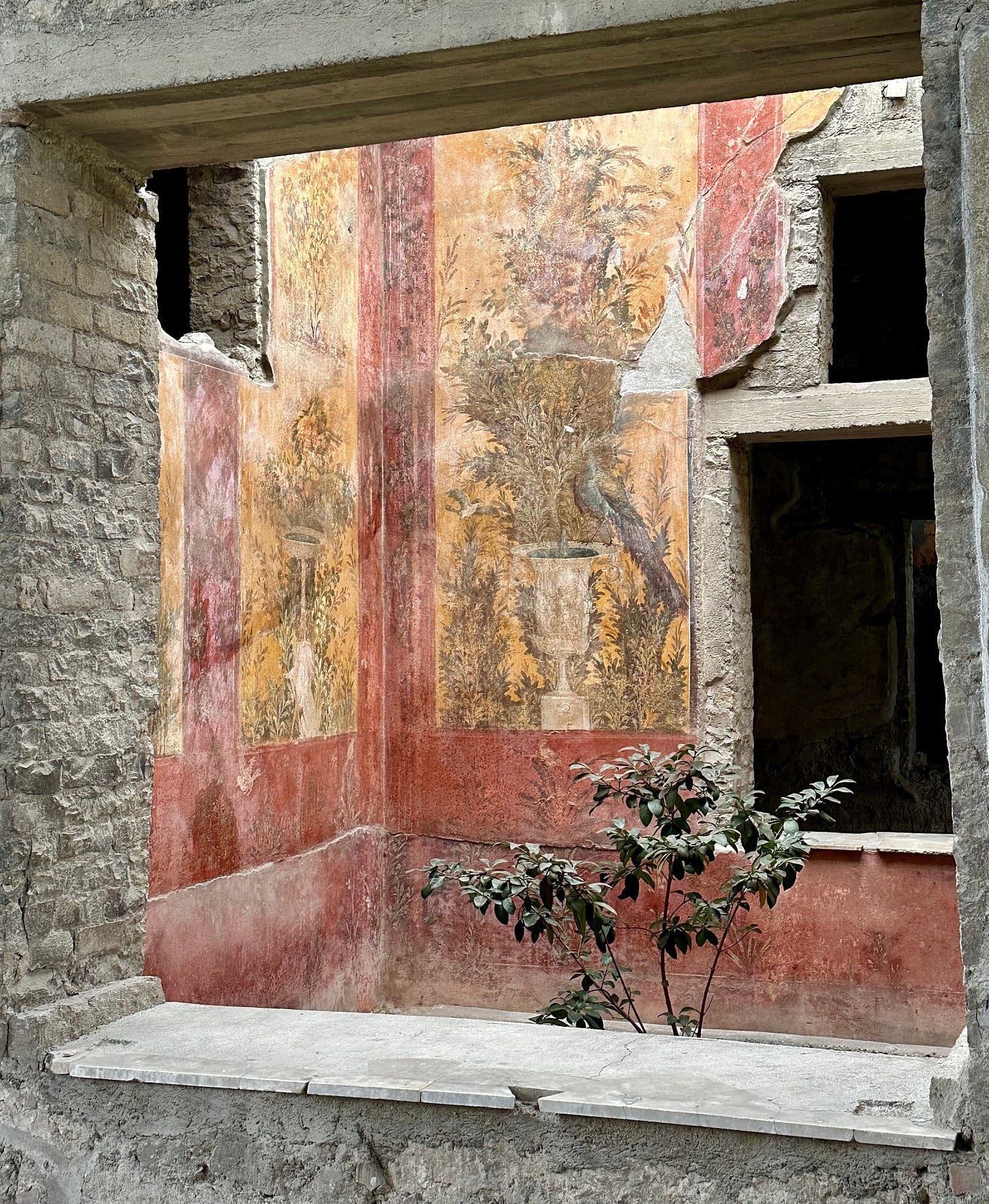
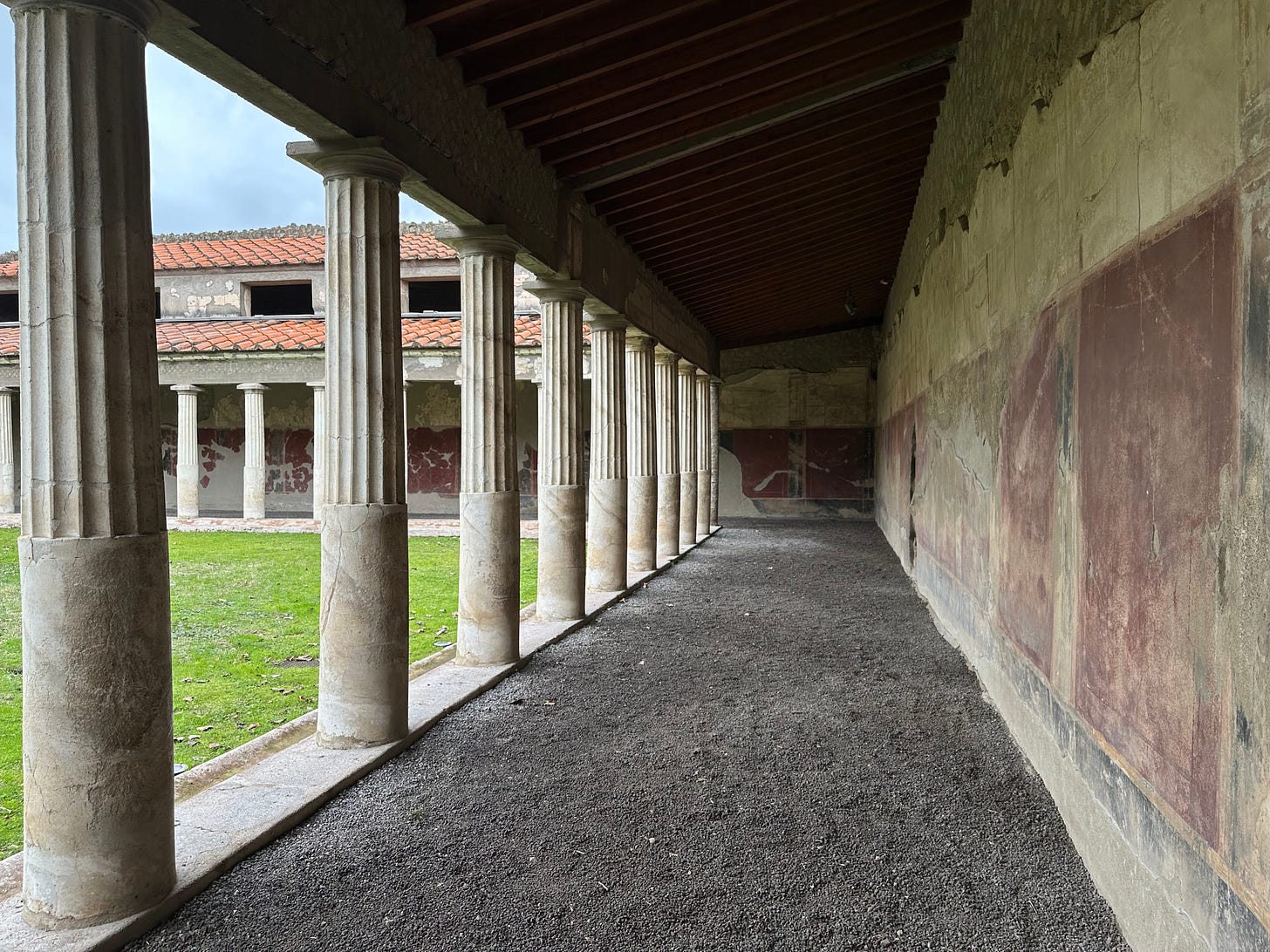
Amazing! Something else to add to my list when I return.
We visited the villa in June, 2019 + had it all to ourselves. Your beautiful photographs have brought back wonderful memories of that visit. Many thanks - Paula